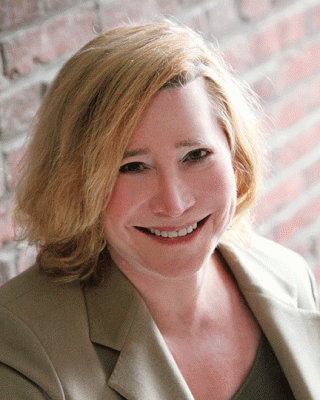
Class of ’78 | The Supreme Court’s June ruling to legalize same-sex marriage was more than a victory for gay-rights advocates. The transgender community—which has been called the “forgotten caboose on the LGBT train”—rallied around Justice Anthony Kennedy’s opinion that sexual orientation is an “immutable” human characteristic.
For transgender activist Dana Beyer M’78, the language served as a call to action among the estimated 700,000 Americans whose gender identity differs from their born sex. It’s also helped the “trans” world drive a conversation that long has foundered under the umbrella of the gay-rights movement.
“I don’t ever recall a Supreme Court decision that talked about dignity and personal identity,” says Beyer, a retired ophthalmologist and executive director of Gender Rights Maryland, one of a handful of advocacy groups in the country dedicated exclusively to pushing for transgender rights. “We will use that in court if trans cases get to that level.”
While the US Equal Employment Opportunity Commission has sided with transgender complainants who argue that they were fired because of their gender identity, there is no federal law prohibiting such discrimination. Nor are there federal restrictions against discrimination in public accommodations, which include restaurants, hotels, and hospitals.
Beyer isn’t deterred. She played a pivotal lobbying role in helping Maryland become one of 17 states to enact its own legislation banning discrimination on the basis of gender identity in employment, housing, and public accommodations. The Fairness for All Marylanders Act went into effect last October, following an abortive attempt in 2011. The legislation passed in spite of the near-demise of Equality Maryland, the state’s preeminent LGBT group, of which Beyer was a member. The newly created Gender Rights Maryland, whose founding members included Beyer, filled the vacuum.
“Most of the efforts of Equality Maryland were toward marriage, because the members and donors were gay,” Beyer says. “But the problem is the conflation of gender identity and sexual orientation. They’re two different issues. We decided we could do it alone. Unfortunately, our gay friends didn’t take it too well. They felt betrayed and did nothing to help us over the last few years.”
Internecine strife is the story of many a civil-rights battle. Beyer’s own battle started as a child, when she fought simply to live.
She was born intersex, a condition in which genitalia are not distinctly male or female. Raised in the New York borough of Queens as a male named Wayne, Beyer sought medical treatment as a teen when uterine tissue started bleeding. Doctors tried to stanch the flow by repeatedly injecting her with silver nitrate, a treatment she describes as “horrific,” and one that led to acute renal failure at 13. The near-death experience gave Beyer’s life a crystalline purpose. She would become a doctor.
“I told myself that no child who is trans would have to be treated the way I was treated,” she says.
But Beyer took a circuitous, even avoidant, route to that end: She became an eye doctor.
“I ended up dealing with an organ system that is far from where I suffered my trauma,” Beyer says. “I was playing it safe.”
Her medical work took her across the globe—to Kenya and Nepal, where Beyer worked for the World Health Organization’s Prevention of Blindness Program. She also spent seven years doctoring in underserved Hattiesburg, Mississippi.
But the outwardly masculine Beyer couldn’t continue living a lie. Wayne ditched his mustache and started hormone-replacement therapy in 1992 to suppress testosterone production. She underwent electrolysis over the next decade and addressed a receding hairline. Beyer resisted openly transitioning to a female because her two sons were young at the time “and in those days we didn’t know about the impact of transition on children.”
After the attacks of September 11, 2001, Beyer knew she could wait no longer. She had spent much of her life feeling chronically suicidal, and she was set on transitioning. (“It’s like the old Apollo missions: It’s Go or No go. I throttled up.”) She had facial surgery in 2003, followed by genital reconstruction. With help from her sons, Beyer chose a gender-neutral name to minimize the chance of embarrassment to the children.
In time she met Sharon Brackett, a computer engineer and transgender activist who conceived of Gender Rights Maryland. The pair split their lobbying efforts, with Beyer focusing on the state’s Washington suburbs and Brackett concentrating her efforts on the Baltimore area.
Brackett characterizes her colleague as a pit bull, someone “who grabs onto something and keeps working it until she either has success or decides to walk away.”
“One of the things that gets misunderstood about Dana, and it’s a strength, is that she’s frank and can be quite tenacious in that behavior,” Brackett adds. “Because she’s trans, some people say that’s the male side of her coming out. My reaction is no, you’ve never lived in New York City.”
Beyer is buoyed not just by the Supreme Court marriage decision, but also by former Olympian Bruce Jenner’s transition into Caitlyn Jenner. But there’s still much more to be done, she notes.
“We need to change the culture sufficiently so that every trans person feels comfortable and safe enough to come out in their childhood or during their teen years,” Beyer says. “We just want to normalize people’s lives and let them be who they really are.
“And then,” she adds, “you can go on and live a full life, being as happy or as miserable as anybody else.”
—Andrew Faught

